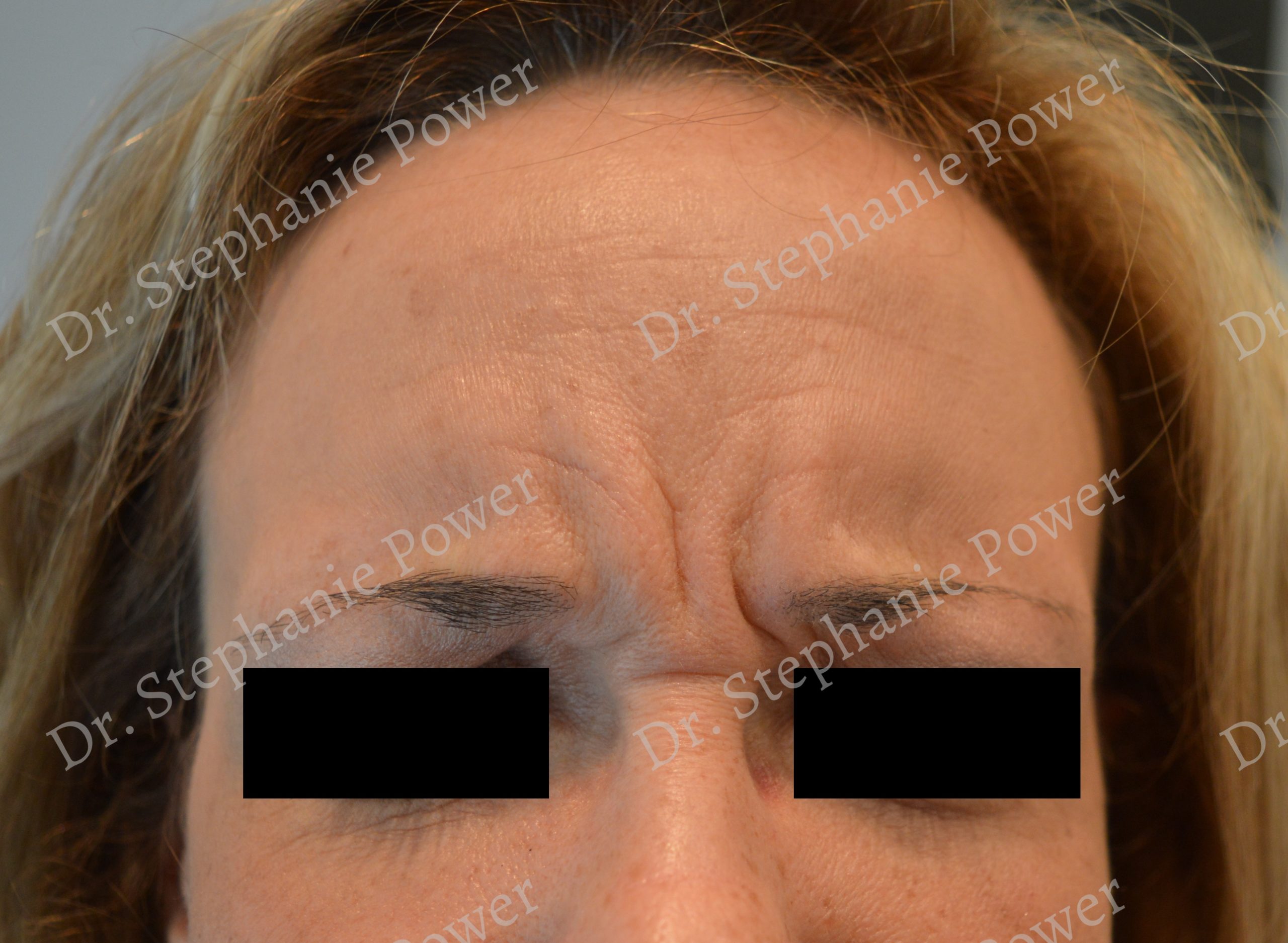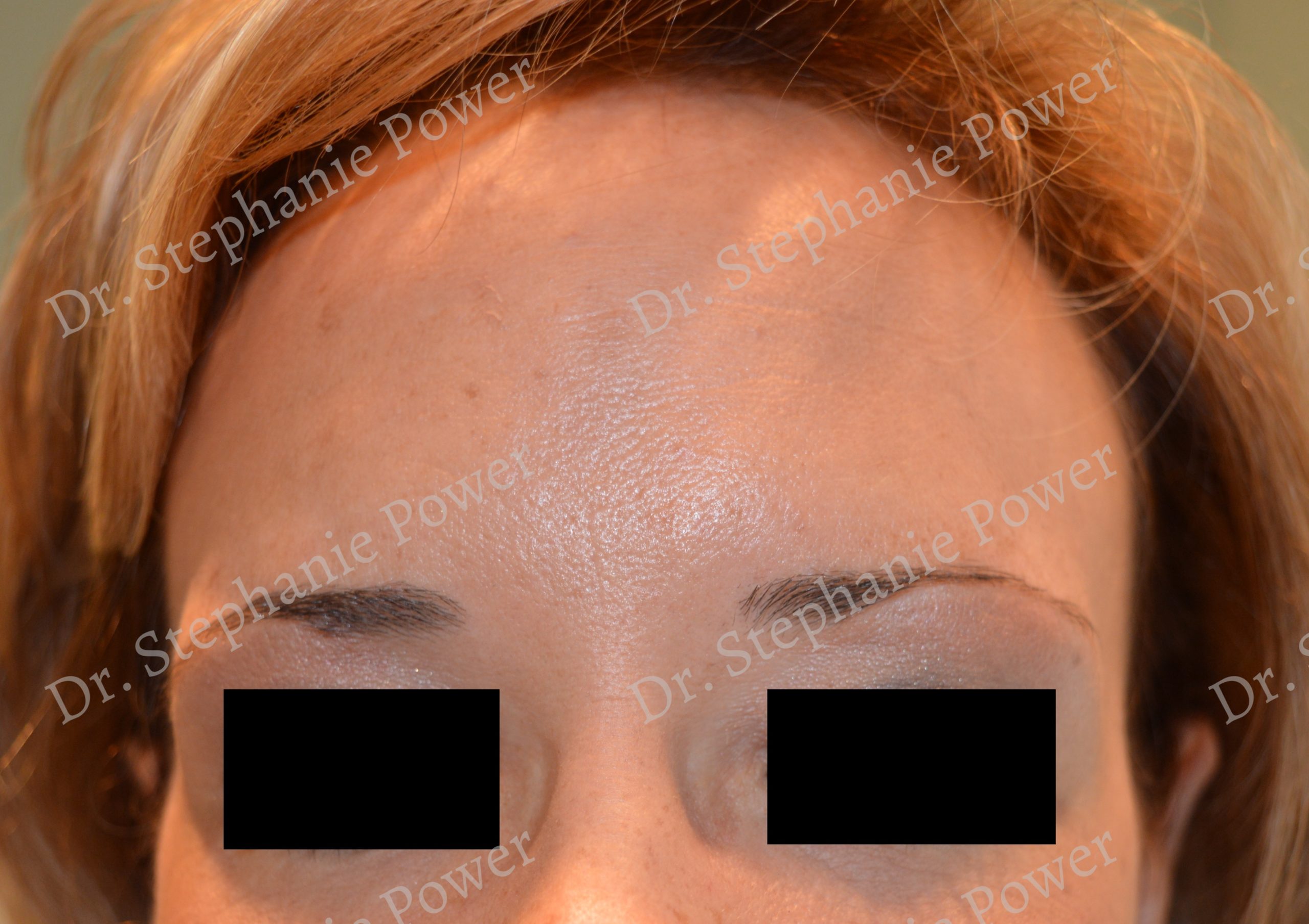BOTOX® AT POWER PLASTIC SURGERY
Botox® is a non-surgical treatment for signs of facial aging. It is most commonly performed to eliminate furrow lines of the brow, transverse rhytids (wrinkles) of the forehead, crows’ feet, and bunny lines. It may also be used to narrow the width of the lower face caused by overactivity or prominence of the masseter muscle and to improve neck banding caused by the platysma muscle.
It is performed as a series of small injections, near painless, to address dynamic wrinkles – those which are related to underlying muscle movement.
Botox temporarily weakens the muscles responsible for accentuating wrinkles and may result in a more youthful appearance. The treatment takes less than ten minutes to perform and patients may return to work or routine activities afterwards with no downtime. The effects are noticeable within 4-5 days after injection and generally last 3-6 months.
What is Botox and how does it work?
Botox® belongs to a class of medications called neuromodulators. It works by binding receptor sites within the muscle and inhibiting the release of a neurotransmitter called acetylcholine. This reduces muscle contraction in that area, which is a reversible effect over time.
What are common concerns of patients considering Botox?
Patients within a wide age range commonly express interest in Botox treatment.
They often share a dislike for the appearance of dynamic wrinkles, those which are accentuated by underlying facial movement.
Botox may soften those wrinkles which appear mild or not visible at rest and become more pronounced with facial expressions.
How may Botox help with wrinkle prevention?
If performed at an early stage before wrinkles become apparent at rest, Botox may prevent these lines from becoming established and deeper over time.
For deeper wrinkles present even at rest, other options (soft tissue fillers in particular) may be performed either alone or in combination with Botox.
Some studies indicate that the soft tissue filler and treatment effect may last longer when performed in combination treatment with Botox.
What are common areas for Botox injection?
Common areas for injection include the following:
- Glabella (the “11” lines), which refers to the central forehead area just above the nose
- Transverse forehead wrinkles
- Crows’ feet
- Additional regions that may be treated with Botox include:
- Masseter muscles (present at the angle of the jaw) to narrow the appearance of a square jawline
- Bunny lines, which are apparent along the sides of the nose
- Fine lines around the lips
- Dimpling skin of the chin, also referred to as “peau d’orange”
- Around the eye region to achieve subtle elevation of the outer eyebrow (the so-called “Botox brow lift”)
Who is a suitable candidate for Botox?
An appropriate candidate for Botox injection has well-defined goals and concerns about their facial appearance as it relates to the underlying muscles.
- Concerns are most commonly related to wrinkles caused by certain facial movements.
- Many patients are interested in wrinkle prevention and delaying signs of facial aging.
- Others may dislike facial contours caused by increased muscle bulk, for example, a square jawline caused by strong masseter muscles.
- Patients considering Botox treatment may not have any known contraindications to the product itself (please see below).
It is also important for patients to understand risks and benefits of the proposed treatment, including the anticipated effect as well as length of treatment effect.
What are contraindications for Botox administration?
Botox is not recommended for patients with a known hypersensitivity to botulinum toxin or any component in the formulation. If you have had a negative reaction following previous Botox injection, it is important to discuss the details with Dr. Power during consultation. Botox is also not recommended for patients with an active infection at the planned injected site.
What to expect during Botox treatment?
- During consultation, it is important to describe your aesthetic concerns in as much detail as possible.
- A thorough physical examination will then be performed by Dr. Power to assess your concerns in relation to facial muscle activity.
- Certain wrinkles and signs of facial aging may not be improved following Botox injection, which will be carefully explained.
- If certain wrinkles are quite pronounced when at rest, weakening the underlying muscles may not change their appearance.
- In these cases, soft tissue fillers or other surgical options may better help you achieve your aesthetic goals.
- Dr. Power will consider your clinical examination and personal goals when formulating a proposed treatment plan.
- Once you have decided to proceed with Botox treatment, your face will be gently washed and a series of small injections, near painless, will then be performed at the sites of concern.
What to expect after Botox?
- Following Botox injections, you may immediately return to work or routine activities.
- If you tend to bruise easily or have bruised following previous Botox injections, you may wish to apply a cold pack intermittently for a few hours following treatment.
- There is a low risk of mild swelling or bruising at the injection sites, however no anticipated downtime after treatment.
- Make-up may be applied immediately post-injection.
- Although activity modifications following Botox injections are somewhat controversial, Dr. Power routinely advises the following for increased safety and decreased risk of complications:
- Please avoid napping and stay upright for 4 hours post-injection
- Patients should also avoid exercise or hot showers for 4 hours post-injection
These activity recommendations may lower the risk of Botox spread beyond the targeted area of injection and lower risk of complications. The recommendations are also intended to reduce blood vessel dilation and increased blood flow to the face immediately following injection, which potentially could alter the effects of Botox.
What is the anticipated recovery after Botox?
Most patients experience little to no bruising and swelling post-injection.
Treatment effects generally become apparent within 4-5 days with maximum effect at 10-14 days post-injection.
The effects generally last between 3-6 months, which may vary based on individual response, history of previous treatment, and amount and location of Botox injections.
What are potential complications of Botox?
The most common complications of Botox are pain upon injection, localized swelling or redness, and bruising. There is low risk of developing an infection at the injection site or allergic reaction.
Additional complications may relate to Botox spreading beyond the site of injection. This could lead to local complications which are temporary, including eyelid ptosis (temporary droopiness), brow or smile asymmetry.
Botox is carefully injected at various facial landmarks to lower the remote risk of experiencing these complications. In appropriately selected patients, Botox is generally a very well-tolerated procedure and remains the most commonly performed non-surgical cosmetic procedure in North America.





"I think the best results are natural-looking. Refreshed and reflected by a patient’s self-confidence."
- DR. STEPHANIE POWER